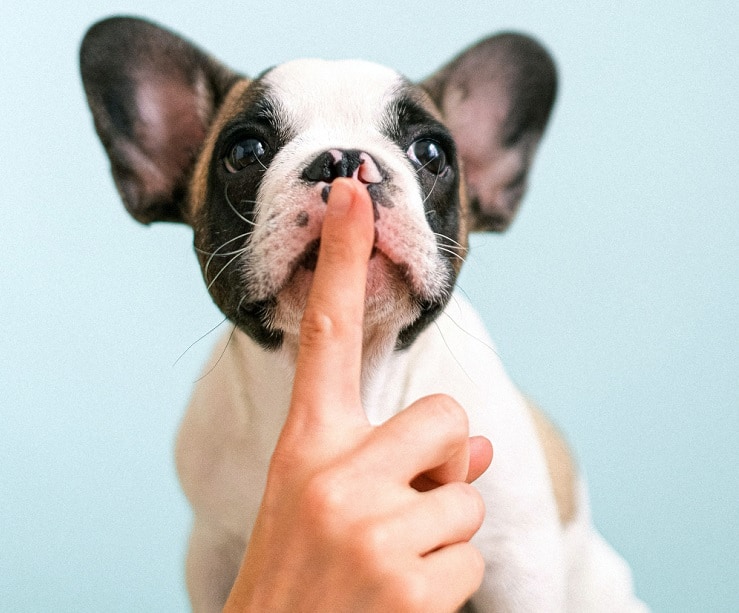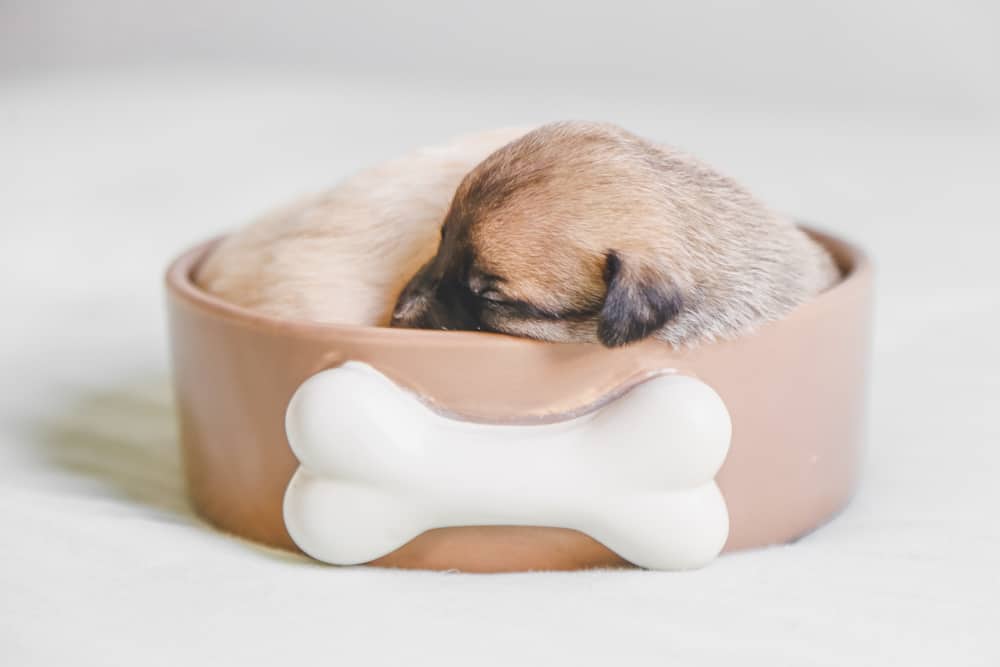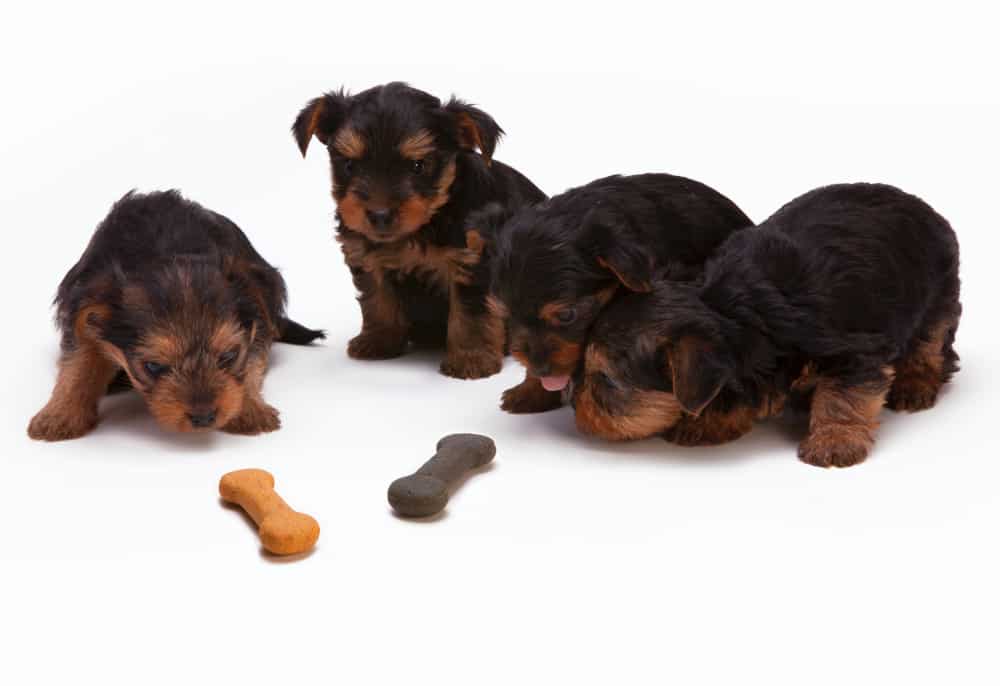The Top Dog Potty Training Spray To Put An End To Your #1 and #2 problems
Let’s all agree on one thing: puppies are pure joy. In fact, having a dog of any breed or size is an immediate boost for your mental health. Who wouldn’t want a regular dose of love from your warm, fuzzy, four-legged friend? However, a dog is a huge responsibility, especially potty training.
How do you get your pet to go number one and two at the right place and time? When you’ve tried all of the dog potty training sprays you will see there is none like T.E.O.S. Our dog potty training spray is just a small part of a larger solution. It’s just what you need to signal a clear no-go zone for your pets. Call 866-517-5445 to buy this one-of-a-kind dog potty training spray.
Let’s look at some great tips to help potty train your pup and how T.E.O.S can help!

Top Tips to Potty Train Your Puppy
It doesn’t matter your dog’s breed, size, or age: each pup needs potty training at some point in their lives. You need a solution that encourages dogs to go in the right place!
Dog potty training starts:
At about 12 weeks old, when they develop some bladder control
As soon as you get your new pup home from the shelter
Every time you move your dog to a new home, or
If your dog begins to prefer other potty spots even after training
You need plenty of patience to potty train your dog and handle accidents in all these scenarios.
Besides using our one of a kind dog potty training spray, here are some great potty training tips to keep in mind.
1. Crate Versus Pad Training
Potty training aims to guide your pup to poop outside, and there are two main ways to do this. You can use a training pad or a crate.
A pee pad (or puppy pads) works well for small breeds, young puppies, or older dogs with mobility challenges. Place a training pee pad away from where the puppy sleeps, and move the pads closer to the door as your dog gets used to it. Finally, move the training pad outdoors to help your dog transition to outside pottying.
Crate training creates a cozy den for your pup, but keep an eye out for signals like pawing at the crate door or whining. Once you see these signs, lead your dog to potty outside. The crate method is highly effective because dogs instinctively won’t soil where they sleep, so they can quickly learn the right potty spot.
Whichever method you choose, expect your pup to have an accident once in a while. Using the T.E.O.S house breaking spray solution, using your spray bottle, spray some T.E.O.S dog potty training spray around the areas where your puppy shouldn’t go. The scent can mark the way to the right spot.
2. Choose the Right Potty Spot
At the beginning of potty training, lead your puppy to the right place as soon as they signal the need to go. The more often you lead your pup to the potty spot, the faster they get used to it, and the fewer accidents you have in your home. The area should be convenient for yourself and your dog, indoors and outdoors.
3. Establish A Routine

Dogs thrive on a predictable routine, from waking up to exercise times, meals, bedtime, and potty breaks.
Eventually, your dog will learn their drill by heart, and they will let you know when they want to do the business. The same goes with feeding schedules which determine the frequency of your dog’s potty needs. Observe how soon after feeding your dog signals for potty time, then adjust the bathroom break schedule to your preference.
Pro Tip: If your puppy is three months old, potty time should be once every three hours. If your puppy is six months old, potty time should be once every 6 hours. However, notice if your puppy gets anxious or whines to potty before the scheduled time, then adjust their food and water intake accordingly.
4. Know the Signs
Every dog tells their parent when they need a potty break. Accidents often happen because we simply aren’t paying enough attention to our dogs, and their urge to eliminate them overwhelms them.
Watch out for the following signs, especially after your puppy eats or drinks water:
Barking
Whining or crying
Walking in circles
Pacing
Scratching at the door
Shaking or trembling
Sitting in front of you and waiting expectantly
Sitting by the door
These body language signals are the difference between successful potty training and accidents. Supervise your puppy throughout the potty training process to understand their potty habits and signals.
5. Watch the Water Too
Observe how much water your dog takes at meal times and after exercise. Some dogs gulp water after walkies and need to potty a few minutes later. Other dogs prefer to drink water along with their food. Avoid giving your dog too much water too often to minimize accidents.
6. Reward Your Puppy
Potty training comes with lots of milestones. Your puppy will learn how to ask for a break, hold their pee until they reach the potty spot, and even go potty all on their own. Celebrate these milestones with positive reinforcement like chew toys, treats, and verbal praise. Your puppy will work even harder to learn their potty training when you shower them with praise.
7. Know How to Handle Accidents
No puppy is perfect, even after successful potty training. But how you respond to accidents is vital for your dog. Whatever you do, don’t be aggressive. If you raise your voice or act aggressively, your puppy may fear potty training altogether.
Your dog probably forgot all about the accident, so gently but firmly correct the behavior. Lead the dog to the potty spot to finish even if they’re done, and withdraw the treat until next time. Clean the soiled area thoroughly, and use T.E.O.S dog potty training spray in those spots to prevent repeat accidents.

Special Tips for Special Pups
These potty training tips can be overwhelming even for the best pet parents, but more so if you have a disabled dog. The good news is that potty training a disabled pup is a challenge worth taking. Your special pooch needs a more accessible potty spot and more patience to deal with incontinence and mobility problems. Follow these guidelines to potty train your disabled pup.
1. Keep the Potty Spot Indoors
Use training pads to create an indoor bathroom for your dog if they have trouble going outdoors. You can also move a training pad around if your dog can’t reach the potty spot in time.
2. Make Potty Training Accessible
Remove obstacles from the path to the training path, including cords, rugs, electronics, or potted plants. If you have a multi-story home, place a pad on each floor of your home in easy-to-reach places rather than in corners or unused rooms.
3. Adjust for Nighttime Breaks
Your disabled dog might be much better at the potty time during the day rather than at night. Keep the potty spot close enough to where the dog sleeps, or add extra lighting to improve visibility. If possible, add a dog ramp to help climb up and down the bed or couch.
4. Give Extra Love
Your disabled pup needs more praise and reward for potty training than you might expect. Your dog is already aware of its shortcomings, and activities that come easily for other dogs require extra effort. They’re more sensitive to scolding but lap up praise and work super hard for rewards. Trust that your disabled pooch will love you even more if you handle their accidents in a wholesome way.
5. Maintain the Same Guidelines as For Non-Disabled Dogs
It may take your disabled pooch longer to potty train, but the same rules apply to all dogs. Stick to a routine, watch what your puppy eats and drinks, and mark your home with T.E.O.S dog potty training spray to keep them on the right track.
Potty Training Dos and Don'ts for Dog Parents
At this point, it’s essential to acknowledge that potty training a dog is incredibly challenging. Each dog is as different as each parent, and it’s easy to get frustrated if your puppy simply doesn’t cooperate. Here are a few dos and don’ts to steer clear of typical dog potty training blunders.
1. Don't Overlook Your Dog's Health and Age
Sometimes potty training challenges come from your dog’s overall health and age. Start potty training too soon, and you’ll get frustrated if the puppy doesn’t learn as fast as you’d expect. Begin too late, and it might be hard to teach an old dog new tricks. Look out for illnesses that may affect your dog’s comprehension, too.
Pro Tip: If your dog is already potty trained but suddenly has accidents in your house, see a vet for a check-up. This could be a sign of an underlying health issue.
2. Do Incorporate Your Dog's Preferences
Some dogs like to potty near indoor plants, others behind curtains, and others still at surprising spots in your house. If some areas are absolute no-nos, use T.E.O.S dog potty training spray to keep your dog safely away. If not, reach a compromise and accommodate your dog’s favorite spots to make potty training much easier. Add fake plants or block out the potty spot to encourage your pup to learn rather than staying rigid with your chosen potty areas.
3. Don't Give Up Too Soon
While some dog potty training programs promise success in seven days, the truth is there’s no one-size-fits-all timeline. It may take anywhere from 8 to 12 weeks of potty training to get into a good routine, and that still depends on:
Your dog-parent relationship
You and your dog’s stress levels
Your dog’s background and environment
Your response to accidents
Your supervision level
Your ability to maintain a consistent schedule
Your dog’s size and age
You’ll leave your dog confused and anxious if you quit from frustration. Instead, speak to other dog owners and learn more about dog potty training to find better solutions. Take your time, reach out to others, and remember: accidents aren’t the end of the world!
4. Do Adjust Meal Schedules
A potty training schedule should match your dog’s meal schedule. Do one without the other, and you’ll end up with countless accidents and frustrations. Measure out the right amount of food and water for your puppy, then observe how often they need to potty. If your dog is free-feeding, leave a set amount of food and water at specific times of the day. This helps to develop a predictable potty training routine.
5. Don't Underestimate the Power of a Crate
Some pet parents believe that a crate punishment, like sending your beloved dog to jail. But a dog crate is a wonderful tool for potty training, mainly if you can’t supervise your dog at all times.
A crate also appeals to your dog’s instinct to live in a den, making it feel safe and less anxious in its own space. This means it’s easier to recognize the signs when your dog wants to potty: if they whine, scratch, or cry in their otherwise cozy crate, it’s time to do the business.
How to Improve Dog Potty Training With T.E.O.S
Potty accidents can ruin your home if you don’t clean up immediately. Of course, plenty of cleaning products help maintain hygiene, but there is a safe and effective way to prevent potty accidents altogether.
T.E.O.S is so much more than a pet training spray. T.E.O.S is the best-kept secret in dog potty training. The T.E.O.S solution is what you need to resolve potty training challenges once and for all. Make sure you check out our testimonials from real pet owners like yourself.
Without a doubt, the T.E.O.S Potty training spray dog owners will use helps train dogs and train puppies to go potty where you want them to go. It’s a 100% all natural product (more like a system) that will encourage puppies and encourage dogs to stop going potty in unwanted places.
So enjoy the learning process. T.E.O.S Potty training spray blows the doors off all of the other potty training sprays you may have seen.
When to Use T.E.O.S Dog Potty Training
You need T.E.O.S if:
Your dog goes potty in unwanted places, either indoors or outdoors
Your dog eats their poop after going number two
Your dog likes to potty on your furniture, counters, sinks, stove tops, and other hugely inconvenient places
Neighborhood dogs go potty around your sidewalk or yard
You need to deodorize areas after potty accidents
Note: T.E.O.S is not a cleaning product. It’s an innovative dog potty training spray formula that naturally repels your puppy from going potty in unwanted spots.
How T.E.O.S Dog Potty Training Works
T.E.O.S is a secret blend of essential oils that are pet-safe and naturally repellent. So while it helps you create boundaries for your pet potty training process, T.E.O.S also makes your home smell fantastic.
What’s more, the T.E.O.S dog potty training spray gives you faster results: about 40% of T.E.O.S customers see immediate results, but most successfully train their dogs in four to six weeks.
Each bottle of T.E.O.S comes with a pet toilet training guide that explains how to use the formula to train or retrain your pets. The T.E.O.S, no potty zone guarantee, ensures that your pets never piddle in unwanted areas again. Use T.E.O.S to mark a clear path to the potty spot and save yourself the stress of constant clean-ups.
What’s more T.E.O.S is 100% American-made, developed from the kitchen counter to the world. Commercial products simply can’t compare with T.E.O.S’s all-natural ingredients and super-fast results.
Frequently Asked Questions About T.E.O.S
Here are some common questions customers ask about the T.E.O.S dog potty training spray.
T.E.O.S is perfectly safe and works for both cats and dogs.
T.E.O.S dog potty training spray costs $59.99. Buy it here.
It depends on your pet. Some respond to T.E.O.S immediately, while others take a few weeks to potty train. However, most pets are potty-free by six weeks.
Since T.E.O.S dog potty training spray is made with natural essential oils, a little goes a long way. Each bottle can last longer than six weeks, so your pets will be 100% potty-trained.
Yes, it does, but it depends on who’s smelling it. T.E.O.S spray has a lovely fragrance that refreshes your home. For your pets, however, T.E.O.S spray irritates their nasal passages, discouraging them from going potty in unwanted places. It’s a win-win!
No. Follow the T.E.O.S illustrated guidelines on how to use the dog potty training spray on your floors, furniture, and other surfaces in your home.
How to Get Started With T.E.O.S, the #1 Dog Potty Training Solution
Whether you’re dealing with small pups or adult dogs, potty training your dog doesn’t have to be stressful at all. Don’t pass up the chance for unconditional love and companionship just because your dog has potty accidents all over the house. T.E.O.S is here to help. With the guidelines above, plus a little spritz of T.E.O.S dog potty training spray, your pet will be fully potty trained in no time. Be patient and positive, and use T.E.O.S to build the proper potty training routine for your four-legged friends. Order T.E.O.S dog potty training spray here, or call 866-517-5445 to learn more about this incredible potty training solution today.
